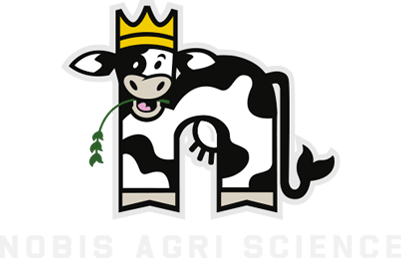What Shapes Feed Efficiency in Dairy Cows?
Feed efficiency, and how we can use it as a management tool on dairy farms, has grown in interest. As a part of a series discussing this topic, this article explores the key factors that influence feed efficiency.
In this article, Feed Efficiency specifically refers to energy-corrected milk divided by dry matter intake (ECM/DMI), an on-farm metric to evaluate cows’ conversion of feed into milk.
What Influences Feed Efficiency?
Feed efficiency is a simple ratio summarizing a very complex biological concept: how effectively a cow converts feed energy into milk. Because it represents such a broad system, many factors can influence this number.
These can be grouped into four broad areas:
- Lactation Stage
- Feed Formulation and Digestibility
- Stress and Management
- Genetics
Lactation Stage
A cow’s energy use shifts throughout lactation. In early lactation, she is often in negative energy balance, drawing on body reserves (primarily fat) to support milk production. This “borrowed energy” effect inflates feed efficiency numbers since ECM/DMI only accounts for feed consumed, not energy mobilized from the body.
Later in lactation, cows divert energy toward pregnancy and restoring body condition. Additionally, first-lactation animals allocate some energy toward growth. In these cases, feed efficiency appears lower because energy used for these important, but non-milk functions, isn’t reflected in ECM/DMI.
Feed Formulation and Digestibility
Feed efficiency improves when cows extract more nutrients from the same amount of feed. Highly digestible feeds enhance nutrient absorption and generally lead to greater efficiency. Feed quality, influenced by forage harvest timing, processing and hygiene, plays a critical role in diet digestibility and overall efficiency. It’s important to note more digestible rations often increase feed intake. While higher intake levels can reduce overall diet digestibility slightly, the benefit of increased nutrient intake and milk production typically outweighs this effect, up to a point. When increased intakes are accompanied by higher milk yield, feed efficiency values may remain similar, but cows can be more economically efficient, as illustrated in Table 1.

Stress and Management
Feed efficiency decreases when cows spend energy on non-productive functions. These “energy sinks” include immune responses to disease, efforts to regulate temperature, bunk or lying space competition, and excessive standing and walking.
In short, stressors that force cows to use energy will reduce feed efficiency. Minimizing stress and improving comfort are essential to support efficient energy use.
Genetics
Genetic differences affect how efficiently cows convert feed to milk. Research in this area continues to grow. The residual feed intake (RFI) trait measures how much a cow eats relative to expected intake for her size, production, and growth. RFI has been introduced and included in multiple breeding indexes. Additional feed efficiency traits are being researched.
While the genetic basis of feed efficiency isn’t fully understood, research suggests the influences include the cow’s unique rumen microbial populations, nutrient partitioning, tissue metabolism and other mechanisms.
Feed Efficiency: What are the Typical Ranges?
Cows’ feed efficiency values typically range from 1.3 to 1.8, depending on lactation stage. First-lactation animals generally fall slightly lower than mature cows. While this article uses energy-corrected milk (ECM) as the standard for evaluating feed efficiency, many published reference values, like those shown in Table 2 from Hutjens (2013), are based on 3.5% fat-corrected milk (FCM). These values still provide useful context and a general sense of expected ranges. The formula used to calculate 3.5% FCM is: (0.432 × lb of milk) + (16.22 × lb of milk fat).

Conclusion
Feed efficiency condenses a complex biological system into a single number. However, many interacting factors influence this metric, including nutrition, management and genetics. By understanding these influences, farms can better leverage feed efficiency as a management tool. The next article in this series will explore management strategies that can influence feed efficiency.



